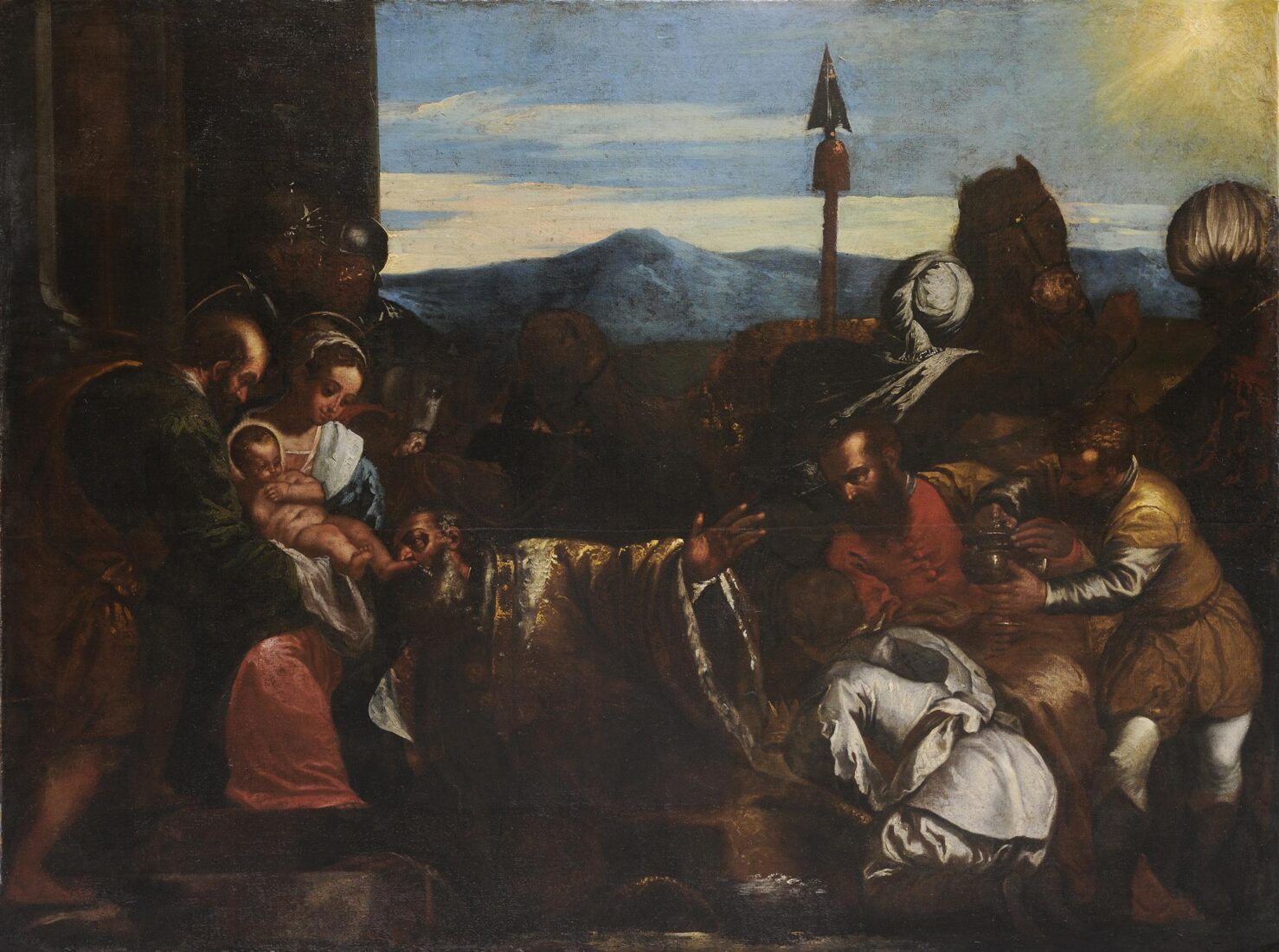We use cookies to make our site work properly, to personalize content and ads, to provide social media features and to analyze our traffic. We also share information about how you use our site with our social media, advertising and analytics partners. Read the Cookies Policy.

The Adoration of the Magi, 17th century
Oil on canvas, 137 x 177 cm
Donated by the National Technical University
This painting is a variation of a work by Paolo Caliari (better known as Paolo Veronese), which is in the library of the Ateneo Veneto (Istituto Veneto di Scienze, Lettere ed Arti in Venice). The Ateneo Veneto is a non-profit institution that was founded in 1812 and is housed in the building of the Scuola Grande di San Fantin, also known as the Scuola di Santa Maria e di San Girolamo. In 1562 a number of great architects, painters and sculptors, amongst them Veronese, embarked upon a major reconstruction and decoration scheme for the Scuola, which had been destroyed in a fire. This date also defines the period during which this composition was created, that is to say, after 1562 or possibly in 1563, a time when religious painting followed the edicts of the Council of Trent (1545- 1563), which issued condemnations of what was judged as heresy committed by Reformation Protestants. In its final session, in 1563, the Council delineated the rules for religious images: they were to undertake the role of the ‘book for the illiterate’ and had to be comprehensible to the faithful and approved by the bishop.
“The Adoration of the Magi” is an image that is readily understandable. The Holy Family is placed off-centre, on the left side of the composition. The Virgin Mary, with the Christ Child in her arms, is sitting on the steps of a magnificent building and extends Jesus’ tiny foot to the first magus to kiss. Joseph, on the very left, with his side and back to the viewer, is helping and at the same time protecting them. Behind the kneeling magus follows a second, while the third is not completely visible. The protagonists are surrounded by horses and soldiers, while two servants in the foreground hold the gifts.
In comparison to the Ateneo Veneto work, the National Gallery painting is different in several ways, mainly in size. Although the National Gallery work is larger, a substantial part from the right side of the composition is missing, as well as a part from the left. In addition, the many over-paintings prove that it has suffered damage in the past. In the recent attempt to conserve it, the removal of a large part of the over-paintings, mainly from the cape of the magus, revealed a refined, albeit chromatically dull brushstroke. The painting’s quality, however, leads to the conclusion – with all due reservations – that this is a version of the Ateneo Veneto work created if not by someone from the studio of Veronese, then by someone close to his time who followed his example.

